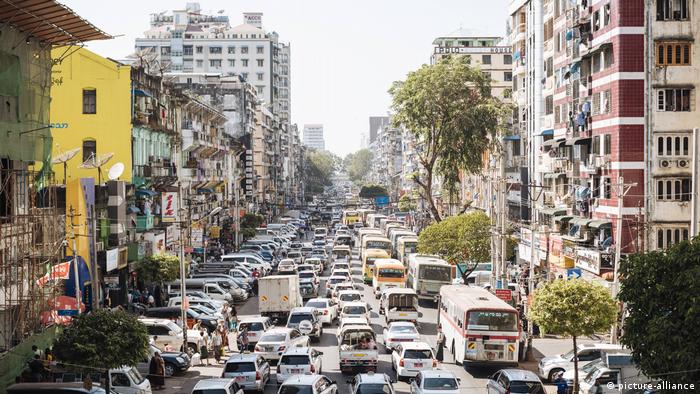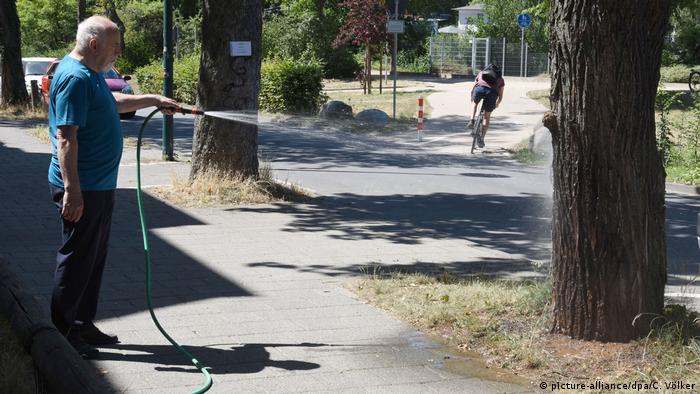Not too long ago, many people weren’t sure if trees had a place in cities. People, cars, houses and buildings made up urban areas — there wasn’t much room for nature.
Trees now have a fundamental place in many big cities around the world, says Sonja Dümpelmann, landscape historian at the University of Pennsylvania — though in most of them, they are still vying for space.
If we want to reap the benefits of urban treescapes, ecologists say it’s vital trees are seen as more than just an aesthetic addition to cities. That’s especially true now that half the world’s population live in cities and a further 2.5 billion are projected to live in them by 2050.
As cities evolve, trees keep us grounded
Trees are powerhouses when it comes to regulating city microclimates — filtering air pollution, providing shade, absorbing CO2, helping prevent flash flooding, as well as acting as an important antidote to the urban heat island effect that makes cities far hotter than surrounding rural areas.
“Trees can make a huge difference to a city’s temperature,” says Tobi Morakinyo, an urban climatologist at the University College Dublin, whose research into the cooling effect of trees in Akure, southwest Nigeria, showed using trees to shade buildings could cool them down by up to five degrees Celsius.
Singapore’s National Parks Board plants more than 50,000 trees a year along roadsides, and in parks and gardens.
In hot sub Saharan African cities like Akure — where average maximum summer temperatures can reach 38 degrees — Morakinyo says trees’ cooling effect is an important tool councils can wield against both heat stress and cooling costs.
Alongside the eco-services urban trees provide, there are also the qualities “that we can’t put monetary value on,” adds Cris Brack, a forest ecologist from the Australian National University and director of the National Arboretum in Canberra.
Those are “biodiversity, aesthetics and our visceral, gut-need to experience nature,” Brack told DW, referring to the concept of ‘biophilia’ — the idea that humans have an innate desire to connect with nature. Mounting evidence shows that people who live in places with more trees experience lower levels of stress and mental illness, even when controlling for socio-economic factors.
Trees make us feel good — do we return the favor?
Though our need for trees in cities appears to only be becoming greater, they often battle oppressive urban environments. Street trees are “in a constant struggle” for space in cities, says Brack, where below ground their root systems can be choked by water pipes, roads and underground car parks, and above ground by pollution, power lines and traffic.
They also face mechanical damage from cars, battering from increasingly extreme weather conditions and regular uprootings to make way for construction sites.
As climate change drives up global temperatures, city dwellers battle increasing heat stress and cooling costs.
Perhaps the most damaging modern challenge for city trees, though, says Somidh Saha, urban forest ecologist at the Karlsruhe Institute of Technology in Germany, is drought. He points to an example from his city of residence — Karlsruhe in southwestern Germany. Following Europe’s unprecedented heatwave in 2018, the city’s council recorded 30% of the trees planted over the previous four years had died — both directly and indirectly because of a lack of water.
“Without enough water, trees become weak and that makes them vulnerable to disease,” Saha told DW. At the same time, declining city populations of birds and arboreal mammals, such as bats, leaves insect populations unchecked, and local trees susceptible to their growing numbers.
Seeing the forest for the trees
Ambitious greening projects have cropped up in several megacities around the globe in recent years. New York City planted a million trees between 2007 and 2015, London mayor Sadiq Khan hopes to green more than half the capital by 2050 to make the world’s first “National Park City,” while Paris announced it would build four inner-city urban forests throughout 2020.
But outside the Global North, in places such as Saha’s native India and Morakinyo’s native Nigeria, where they cite a lack of resources and political will as big barriers to making urban greenery a priority, trees in cities are much scarcer.
As climate change brings hotter temperatures and unpredictable downpours, cities are demanding a new kind of resilience from urban trees. For many places in the world, ecologists say that means planting more exotic species of trees.
Read more – Are cities Europe’s new biodiversity hotspots?
Source: https://www.dw.com/en/extreme-weather-heat-stress-water-drought-health-green-parks/a-54210247









